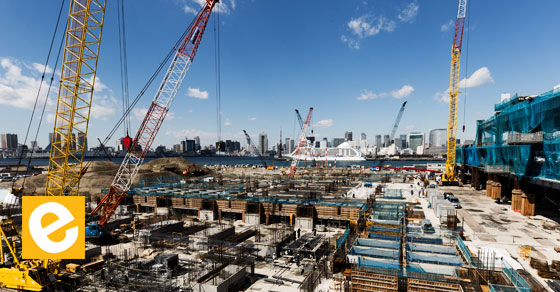
How to Increase Productivity in Construction Projects When Managing Hundreds of Projects
For the past several years, researchers and business owners theorized about how to increase productivity in construction projects. Comparing construction to other industries shows that while they have increased productivity, the construction industry lagged behind. Technology and software have impacted every industry in the past several years. Each industry it touches has seen increases in productivity and innovation. However, the construction industry hasn’t seen this jump in productivity. Several reports found that the construction industry has been slow to adopt technology and automation, both processes that can increase productivity dramatically.
Of course, weighing the construction industry to other industries isn’t quite fair. For starters, most other industries create and maintain a product or series of products. And while each product might be a separate project, the end goal is generally to reproduce results the same way. Construction, on the other hand, is an industry comprised of unique projects. While two projects might look the same, the customization and necessary hands-on work make it completely different from other industries. But many of the technologies and advancements used in large companies in these industries would increase productivity in construction projects for companies that manage hundreds of projects.

Table of Contents
Integrated Labor Delivery
One of the easiest ways to increase productivity in construction projects is through integrated labor delivery. Integrated labor delivery is a project delivery type, like the traditional design-bid-build or integrated project delivery. However, integrated labor delivery increases productivity in construction projects. Unlike the other methods, integrated labor delivery brings the workforce into the equation. The ILD model brings subcontractors into the mix in order to not only hold them accountable but to also better incentivize productivity. Like integrated project delivery, integrated labor delivery creates a contingency budget for project overruns. The beauty is that for projects that are on time and under budget, that contingency fund can be used as bonuses for the stakeholders. Integrated labor delivery has been shown to increase productivity in construction projects, and is especially effective for companies managing hundreds of teams.
The integrated labor delivery system tries to cut through waste and make every project efficient. It works by bringing the owner, general contractor, subcontractor, major suppliers, and architects or engineers together. Together they evaluate the schedule and workflow to determine what will increase productivity in construction projects. They can pull plan. Which is when the team works backwards from the projected completion date in order to assemble a schedule. The schedule tends to be more effective because all parties can see where there could be gaps or lags in the schedule and tighten up.

Prefab Construction
Marriott International has built several hotels using prefabricated construction, and they’ve found it’s an easy way to increase productivity in construction projects. They started aggressively building using the prefab model in 2017 to help deliver some of the 500 hotels they are trying to build. Prefabricated modules increase productivity in construction since it allows for the quick assembly of multiple units or pieces. Prefab companies build entire rooms from the electrical and mechanical elements to the finishing touches. That way the only concern is with the installation.
One of the reasons it increases productivity in construction projects is because off-site factories build the modules. When they’re built in an offsite factory it allows for construction regardless of weather or other environmental factors. So the factory builds the units while site crews complete most to all of the site work. That way by the time earthwork and rough-in is complete, a crew can start assembling the prefabricated units at the site. This reduces the time on a project which increases productivity in construction projects. However, this only is very effective for buildings and projects which require building multiples of the same unit.

Implementing Technology
As stated earlier, one of the reasons why the construction industry is less productive is the lack of technology and automation. It isn’t just the increased use of tablets or drones, it is using technology to better your business. Project management and time tracking software are an easy way to increase productivity in construction projects. Time tracking software increase productivity in construction projects because it can track the resources and work done on a site. Superintendents can use the information from the time tracking software, cost codes, and daily reports in order to know the productivity of their team and make changes. While construction management software helps subcontractors schedule their resources, teams, daily reports and more.
Managing hundreds of projects doesn’t mean that there has to be a decrease in productivity. Through methods like integrated project delivery, lean construction, technology, and automation, large construction companies handling hundreds of projects can increase their productivity.
